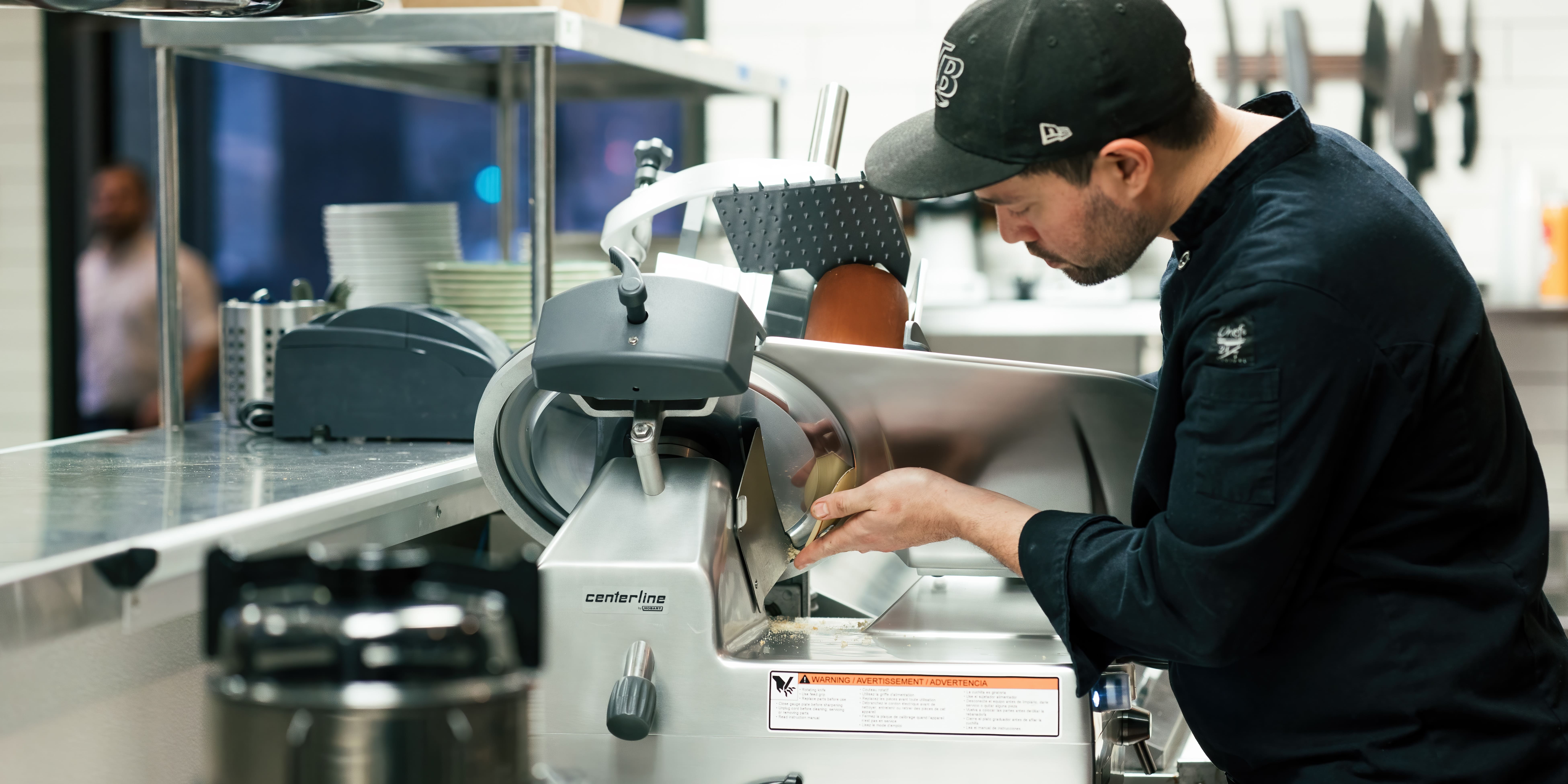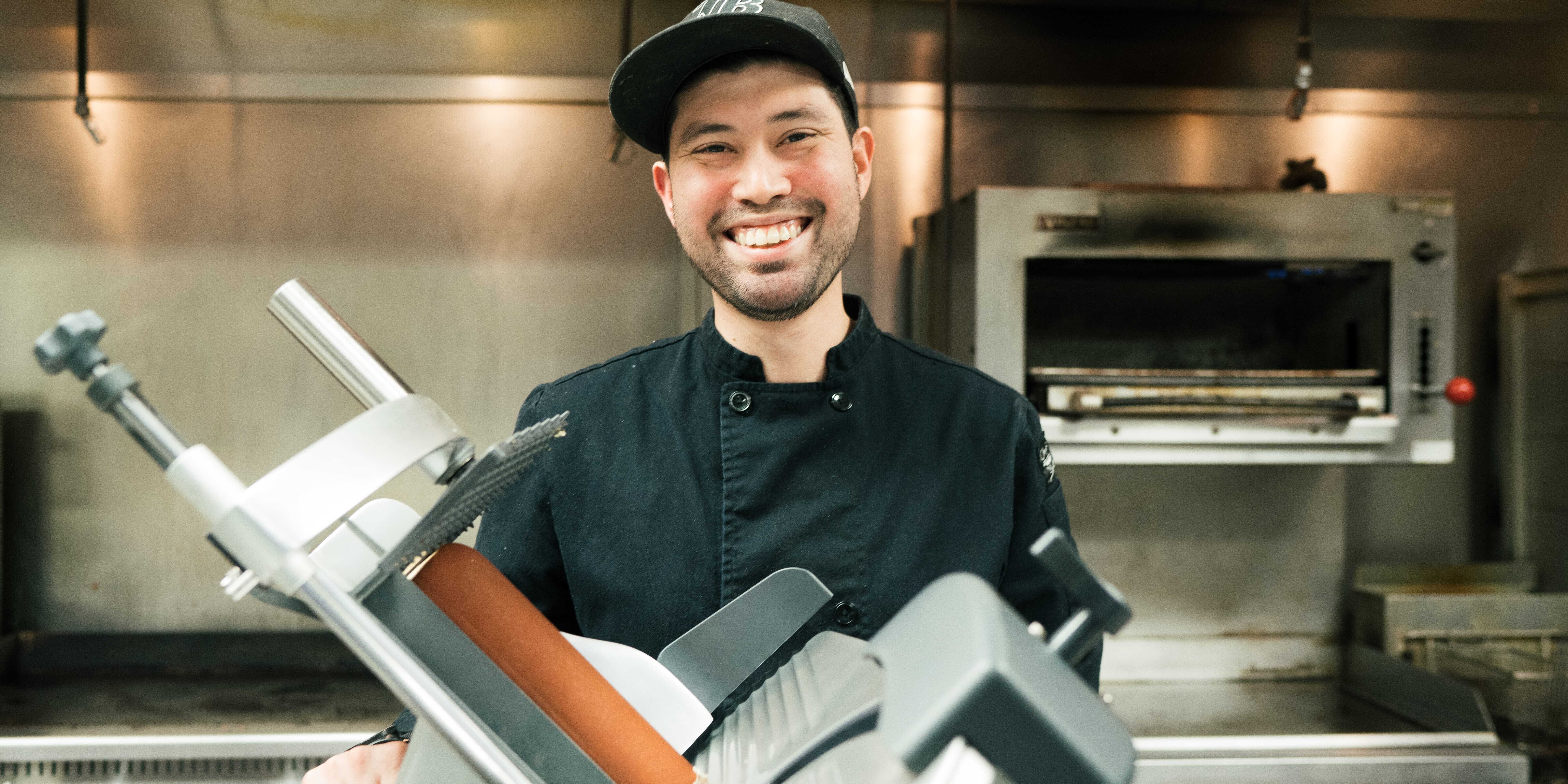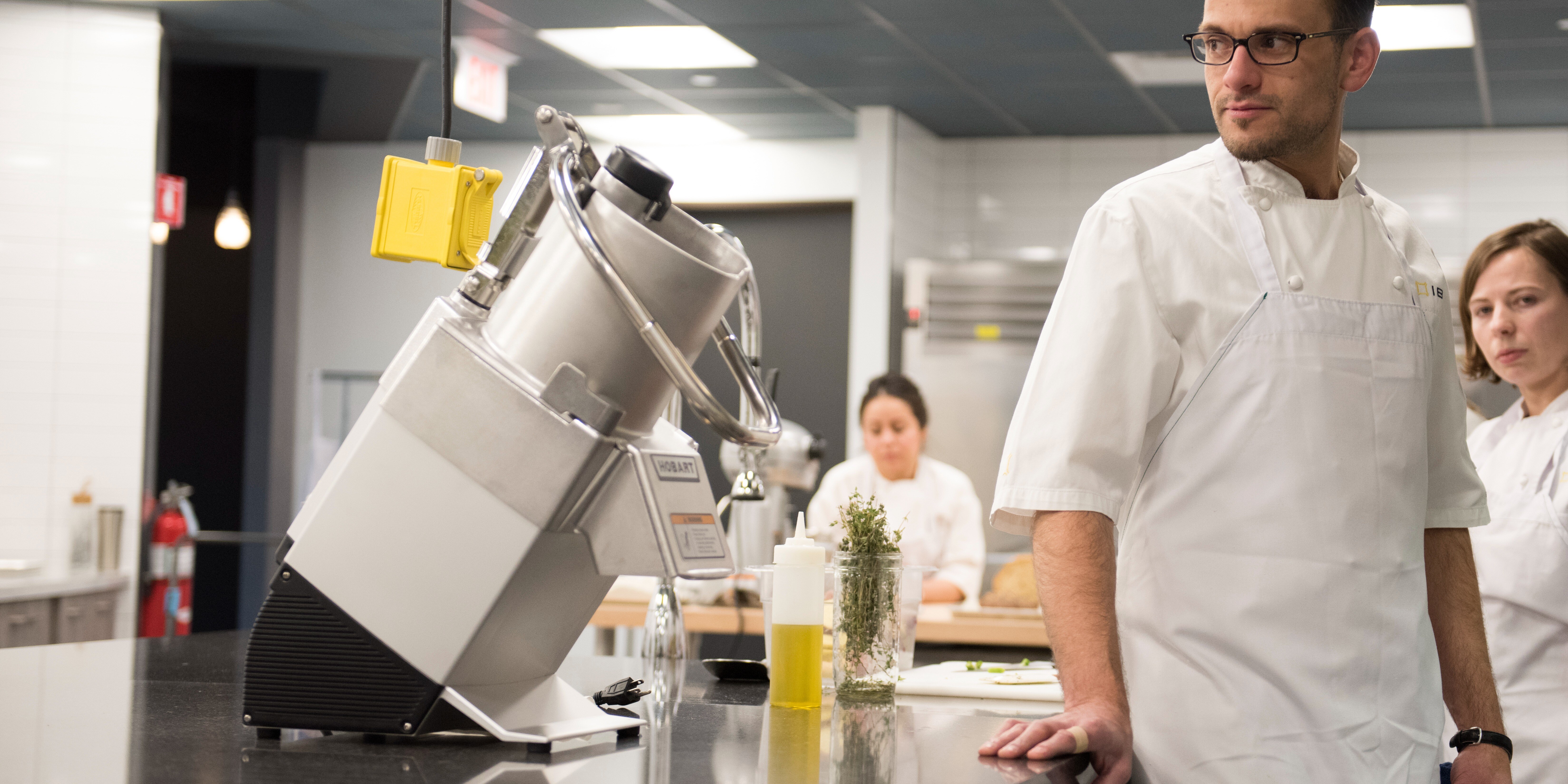With a district of 2,600 students at six sites within five square miles, Greendale Schools in Greendale, Wis. have a lot to focus on — from academics and sports to the school meal program that serves students each day. The high school kitchen serves as a satellite location to prepare breakfast and lunch primarily for the elementary and high school, with some support provided to the middle school.
Since being selected as a recipient of the Hobart Equipment Grant, hosted by the School Nutrition Foundation (SNF), kitchen staff have a new mixer and food processor to help streamline production.
Cindy Kacmarcik, director of Food and Nutrition for the district chose a FP150 continuous-feed food processor, along with a Hobart Legacy+® HL600 60-quart mixer to replace their 64-year-old Hobart mixer. She felt confident in her choices given her experience with Hobart equipment.
“I think Hobart holds up to its name in more ways than one,” she said. “I mean, the quality of the product and the customer service has always been top notch.”
Kacmarcik said her staff is already excited about using the equipment and they are making plans to use it for more from-scratch and semi-scratch menu options for the coming school years.
Nutrition education for school students
At the Greendale High School, students take an active role in learning about the value of fresh food. The school offers a culinary class, along with a health and science course that focuses on nutrition. As part of that course, students get involved with growing vegetables in the school’s garden.
“The garden we have here at the high school is about 10,000 square feet,” explained Kacmarcik. “Students get garden plots, and they learn about what they grow, including the nutritional values. And our kitchen reaps the benefit of fresh produce they harvest.”
According to Kacmarcik, students work with staff, three of whom are master gardeners, to plant in the spring and then tend to the garden over the summer.
“A lot of students, they start and think it’s not going to be fun. But once they get in there and they see things growing, they pretty much get hooked,” explained Kacmarcik. “They grow your typical garden produce — tomatoes, cucumbers, zucchini and pumpkins. They grow carrots, onions, potatoes and herbs, too.”
Kacmarcik added that “We usually advertise if a school lunch menu item is from the garden. And that tends to make students more interested in trying it. For example, one group grew purple potatoes that we sliced into wedges and grilled them for our starch of the day. We’ve also made spaghetti sauce from the tomatoes and herbs, which students enjoyed.”
The students sell some of produce at local farmer’s markets during the summer, with all the proceeds going back into the garden. They donate the rest of the produce to the high school kitchen when school starts in August.
The high school also has a hoop house where students and staff can grow lettuce for salads year-round. They have also grown cucumbers there, along with kale that kitchen staff roast to make spicy chips from — a student favorite says Kacmarcik. Many of the seeds are donated to the school from local nurseries, so the hoop house can yield different harvests year after year.
The Hobart advantage
Kacmarcik and her staff, including Eric Lawson (affectionately called Chef Eric by students), have put their new FP150 continuous-feed food processor to work to process vegetables for pre-made salads students can order each day. They have found that processing cucumbers and carrots, for example, isn’t just faster than manual cutting, but it’s also providing fresher, more consistent output.
“It's like day and night. I mean, we can get shredded carrots in a matter of less than a minute,” said Kacmarcik. “We can put cucumbers in the machine six at a time for slicing. Compared to the competitive food processor we used before, the Hobart is so much more consistent. Before we had slices and slivers, some thin and others wide. Now, with the Hobart, when you want slices, you get the same size slice every time.”
The FP150 features a large hopper, with a 50-degree angled front that the staff can easily load with little to no pre-cutting of the produce. Hobart designed it with a de-coring screw that moves the produce away from the plate hub, so it is fully processed and consistent. The machine is capable of processing 14 pounds of product in a minute and is available with multiple cutting blades for slicing, dicing, grating and shredding.
And while Kacmarcik and staff appreciate the speed of the food processor, the freshness of the produce they can provide to students is most important.
“Processing the vegetables ourselves, it’s just fresher. We can do it when we need it each day. We don't have to order large volumes of something and hope it lasts all week long,” she explained. “The whole produce also lasts longer than anything that's been pre-processed, so the there is less waste.”
Kacmarcik says Chef Eric and her other staff members also appreciate how easy the FP150 food processor is to clean, since it has an all-aluminum hopper and housing. The hopper is also removable, so it’s easy to clean in a three-compartment sink.
As for their new Legacy+ HL600 mixer, Kacmarcik says it’s much easier to use than their 64-year-old Hobart mixer and she doesn’t have concerns now about performance or maintenance.
“Service was never a problem on our old mixer. Hobart was always responsive,” she explained. “It was the service parts that were hard to get. And then we found that there were continuously more problematic issues as it got older, like a leaky transmission. We also had a problem with the paddle hitting the bowl incorrectly, so then we’d find product at the bottom of the bowl that wasn't mixed properly.”
With the new mixer, Kacmarcik says that they get consistent mixing for every batch of ingredients.
“We mix batter breads in it, like zucchini bread, plus muffins and fruit-based desserts,” she explained. “Chef Eric uses it to make mashed potatoes and has really enjoyed using the mixer.”
In particular, Lawson likes the Shift-on-the-Fly™ feature that allows for speed changes when the mixer is operating, so there is no stopping and starting, and the Quick-Release™ agitators since they are easy to remove. These agitators also ensure the best mixing performance since they keep a consistent bowl-to-agitator ratio. Another feature that Lawson really likes is the swing-out bowl, which has a single installation point that makes it easy to add and remove ingredients.
Kacmarcik likes that the new Legacy+ 60-quart mixer is quiet during operation and that it has an electric bowl lift that moves the bowl into position for mixing.
“This new mixer is so quiet, you can barely hear it run. The other one would sound like clunking.” she said. “And our old mixer had a hand crank to put the bowl into position, which could be difficult and time consuming. Being able to lift the bowl with the press of a button is great.”
When the school received both the food processor and the mixer, two Hobart representatives visited to provide training, which Kacmarcik says was a tremendous help in learning to operate the equipment properly and efficiently.
The future of the school meal program
As the staff get even more familiar with their new Hobart equipment, Kacmarcik plans to increase the amount of from-scratch and semi-scratch menu items they offer. These include processing more vegetables from the school garden, including cabbage for coleslaw, and adding more baked goods like apple crisp and cookies.
“At the high school, especially, the students like more of the homestyle meals,” she said. “That gives us the opportunity to experiment a bit more with our Hobart equipment.”
About the Author
 Grace Strotman is the marketing & K-12 segment manager for Hobart – Food Preparation Products. She has been with Hobart since 2020 and is responsible for marketing communications for the full line of Hobart food preparation equipment, with an added focus on the K-12 segment. See all her blogs here.
Grace Strotman is the marketing & K-12 segment manager for Hobart – Food Preparation Products. She has been with Hobart since 2020 and is responsible for marketing communications for the full line of Hobart food preparation equipment, with an added focus on the K-12 segment. See all her blogs here.


-min.jpg)







